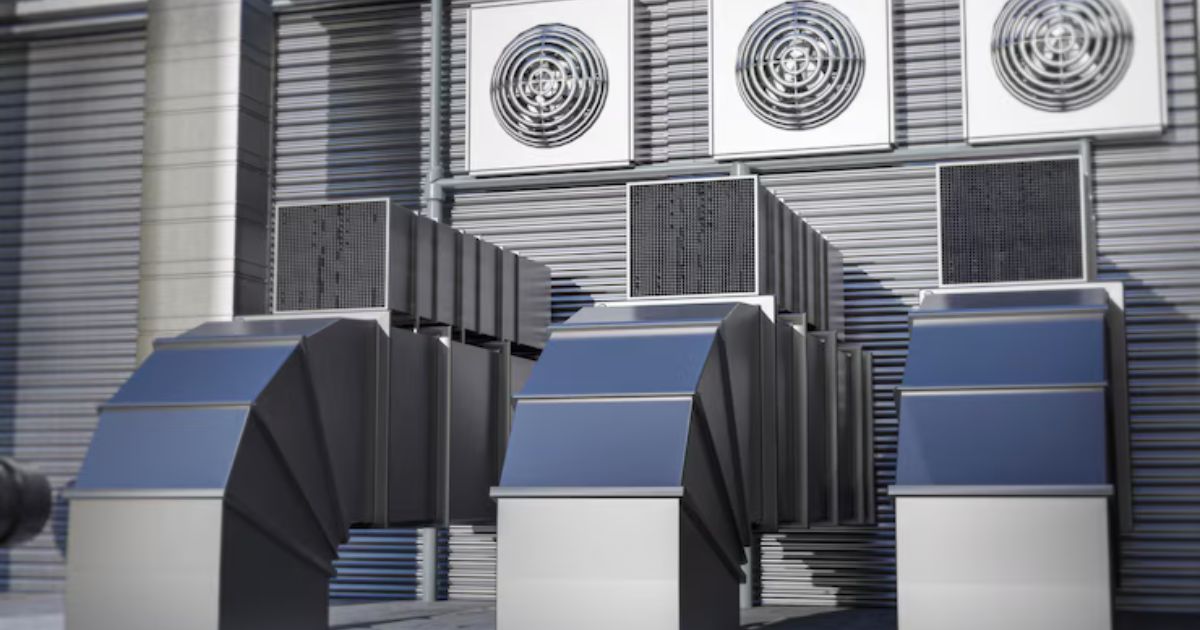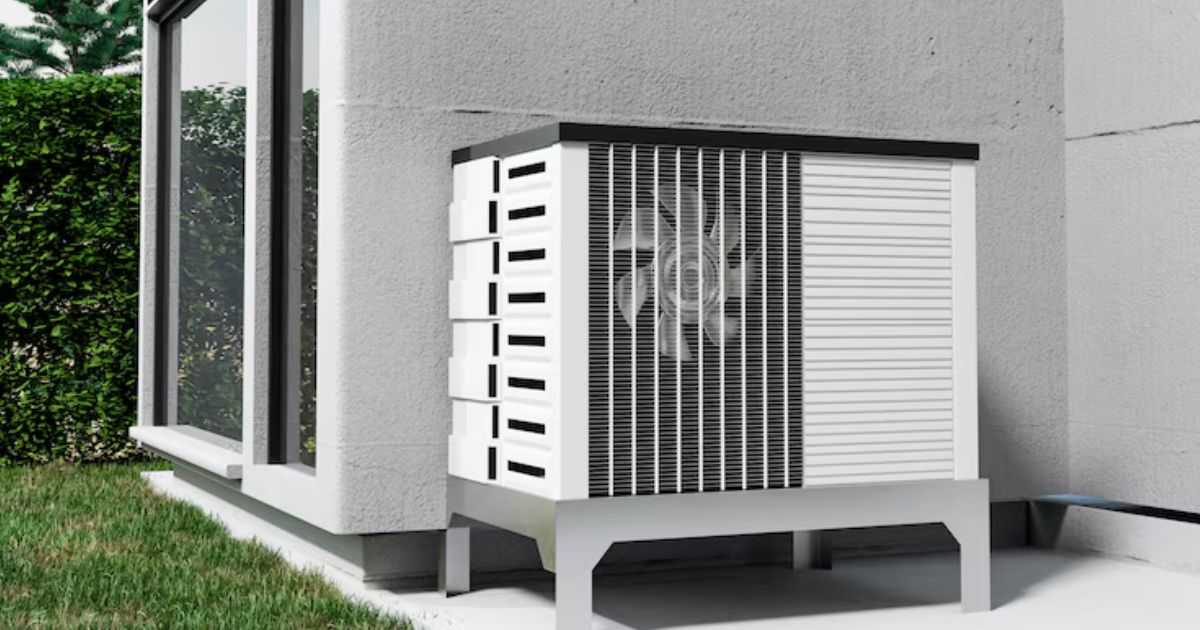A 4 ton ac unit refers to the cooling capacity of the air conditioner. In HVAC terms, “ton” doesn’t refer to weight—it represents the amount of heat an AC can remove from a space per hour. A 4 ton unit can remove 48,000 BTUs (British Thermal Units) of heat per hour, making it ideal for medium to large residential homes or small commercial spaces.
Who needs a 4 ton AC unit?
If your home or business space is between 2,000 to 2,500 square feet, a 4 ton AC is usually a good fit. Climate also plays a role; hotter regions may require higher tonnage, while moderate zones might get by with less. Always consider insulation, window count, ceiling height, and internal heat sources too.
How to size an AC unit correctly
Getting the right size AC is crucial. Too small, and it won’t cool effectively. Too large, and it short cycles, wearing out faster and wasting energy. HVAC pros typically perform a Manual J Load Calculation, which factors in area size, insulation, sunlight exposure, and more to ensure perfect sizing.
Energy efficiency and SEER ratings
SEER (Seasonal Energy Efficiency Ratio) measures how efficiently your AC performs throughout a cooling season. A higher SEER rating equals better energy savings. Most 4 ton units range between SEER 13 to 20+. Choosing a unit with a SEER of at least 16 is ideal for balancing upfront cost and long-term efficiency.
Installation requirements for a 4 ton AC unit
Installing a 4 ton AC is no DIY project. It involves proper duct sizing, electrical wiring, refrigerant line installation, and placement of the air handler and condenser. A licensed HVAC technician ensures everything is up to code and optimized for peak performance.
Indoor vs outdoor units: What’s included
A full 4 ton central AC system includes an indoor evaporator coil, an outdoor condenser, and the air handler or furnace. Depending on your setup, you might already have a compatible furnace, which can reduce costs if only the cooling unit needs replacement.
Average cost of a 4 ton AC unit
Prices vary based on brand, SEER rating, and installation complexity. On average, the unit itself ranges from $2,500 to $5,000. Including professional installation, you’re looking at a total of $5,000 to $8,500. High-efficiency models and complex installs can push costs even higher.
Best brands offering 4 ton AC units
Popular HVAC brands like Trane, Carrier, Lennox, Goodman, and Rheem offer reliable 4 ton units. Each brand varies in price, warranty, features, and durability. Trane and Carrier are often seen as premium, while Goodman and Rheem are great for budget-friendly performance.
Maintenance tips to extend lifespan
Regular maintenance keeps your 4 ton AC running smoothly for 15–20 years. Key tasks include replacing filters monthly, cleaning coils, checking refrigerant levels, and scheduling professional tune-ups at least once a year. Neglecting maintenance can lead to breakdowns and costly repairs.
Common issues with 4 ton AC units
Even reliable systems face problems. Common ones include refrigerant leaks, capacitor failure, thermostat malfunction, clogged drain lines, and compressor wear. Many of these are preventable with regular checkups and swift repairs when issues arise.
Ductwork considerations for large systems
A 4 ton unit pushes a lot of air. If your ductwork isn’t sized properly, you’ll get poor airflow, hot spots, and increased energy use. Before installing a large unit, ensure your duct system is inspected and upgraded if necessary to match the unit’s capacity.
Noise levels and comfort control
Most modern 4 ton ACs operate quietly, especially those with variable-speed compressors. These models adjust their cooling intensity based on demand, maintaining more even temperatures while running quieter than traditional single-stage systems.
Zoning systems for better climate control
Pairing a 4 ton unit with a zoning system allows you to divide your home into separate climate zones. This boosts comfort, reduces energy use, and tailors the cooling needs for different rooms—like keeping bedrooms cooler at night without overcooling the whole house.
Smart thermostat compatibility
Smart thermostats like Nest, Ecobee, or Honeywell sync perfectly with modern 4 ton units. They allow you to control temperature remotely, automate schedules, and monitor energy use. Many units even work with voice assistants like Alexa and Google Assistant.
Environmental impact of large AC units
Cooling requires energy, and energy usually means emissions. High-efficiency units use less electricity and newer refrigerants like R-410A, which are more eco-friendly. Choosing ENERGY STAR certified units also helps minimize your carbon footprint.
Financing and rebate options
Replacing or upgrading to a 4 ton AC can be pricey, but many local utility companies offer rebates for energy-efficient systems. Some manufacturers and dealers also provide financing plans, making the investment more manageable over time.
Longevity and warranty coverage
Most 4 ton AC units come with warranties ranging from 5 to 10 years. Some brands offer lifetime warranties on specific parts. Always register your product after purchase and consider extended warranty options if available.
Conclusion
A 4 ton ac unit unit is a powerful solution for medium to large homes or light commercial spaces, offering robust cooling and modern energy efficiency. While it’s a big investment, the payoff in comfort, reliability, and long-term savings is worth it—especially if you choose the right model and ensure proper installation.
FAQs
How many square feet does a 4 ton AC unit cool?
Typically, a 4 ton unit cools between 2,000 to 2,500 square feet, depending on insulation, sun exposure, and ceiling height.
Is a 4 ton AC unit too big for a house?
It can be if the home is smaller than needed. Oversizing leads to short cycling and higher energy bills. Always size based on a professional load calculation.
What’s the difference between a 3.5 and 4 ton AC unit?
A 4 ton unit removes 48,000 BTUs per hour, while a 3.5 ton removes 42,000. The choice depends on your home’s square footage and layout.
Can I install a 4 ton unit myself?
No. Due to electrical, refrigerant, and safety concerns, installation should always be handled by a certified HVAC technician.
How long does a 4 ton AC unit last?
With regular maintenance, it can last 15 to 20 years. Some high-end models last even longer with proper care.











